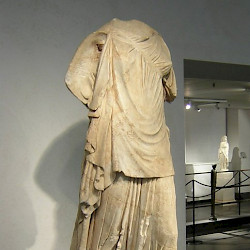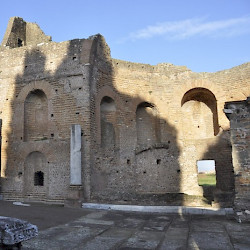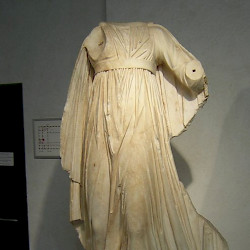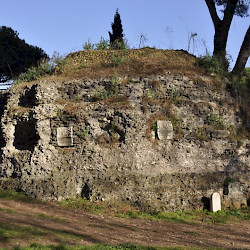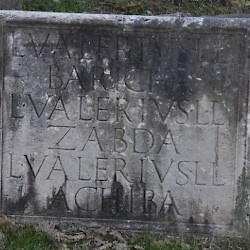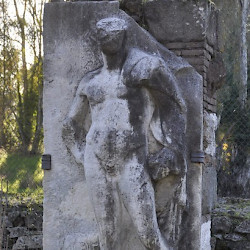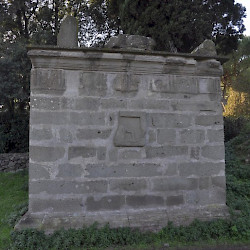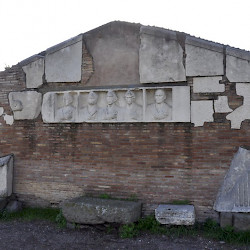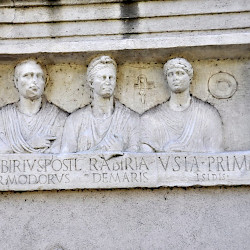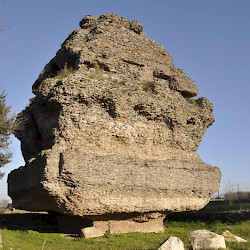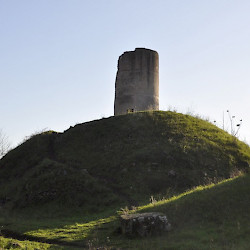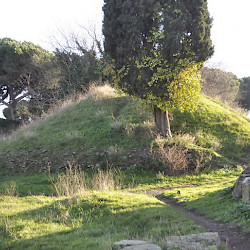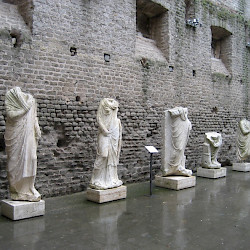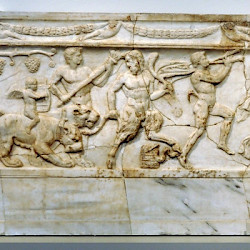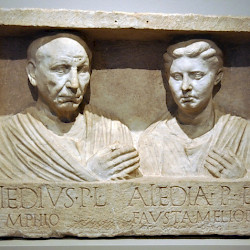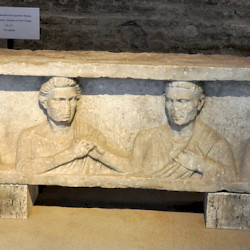Rome, Via Appia
Q189417Via Appia: ancient road from Rome to Capua, Beneventum, and Brundisium.
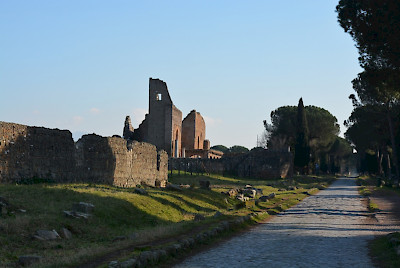
Anyone traveling to Rome around the year 230 CE on the Via Appia, the "the queen of the long roads" according to the poet Statius,note would have known from a great distance that he was approaching an important city. He would have regularly passed vast herds of cattle and other livestock, from which could be inferred that a populous settlement lay at the end of the road.
Construction
This perfectly straight highway, began in 310 BCE (312 Varronian) by Appius Claudius, was a feat of engineering unrivalled in the ancient world. Initially, it went through the malaria-invested Pontine Marses up to Tarracina,note but it was continued up to Formiae and Capua in 295 BCE. To pay the workers, Rome started to mint coins. Fines were used to pay for pavement.note
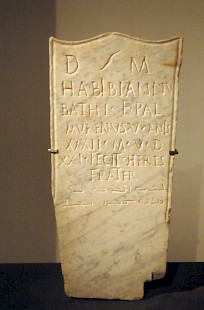
In 264, Tarentum and Brundisium was reached. The Via Egnatia was the next section, leading from the Adriatic shores to Byzantium. Much later, during the reign of the emperor Trajan, a second was created, the Via Appia Traiana, which evaded Tarentum, passing through Barium instead. The spendid road was used to allow swift movements of troops, but also demonstrated that Rome could spend large sums of money on public works.
Now the Appian Way is in length a journey of five days for an unencumbered traveller; for it extends from Rome to Capua. And the breadth of this road is such that two waggons going in opposite directions can pass one another, and it is one of the noteworthy sights of the world. For all the stone, which is mill-stone and hard by nature, Appius quarried in another place far away and brought there; for it is not found anywhere in this district. And after working these stones until they were smooth and flat, and cutting them to a polygonal shape, he fastened them together without putting concrete or anything else between them. And they were fastened together so securely and the joints were so firmly closed, that they give the appearance, when one looks at them, not of being fitted together, but of having grown together. And after the passage of so long a time, and after being traversed by many waggons and all kinds of animals every day, they have neither separated at all at the joints, nor has any one of the stones been worn out or reduced in thickness, — nay, they have not even lost any of their polish. Such, then, is the Appian Way.note
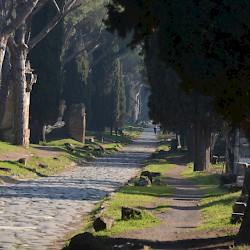 Rome, Via Appia |
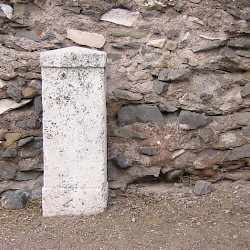 Rome, Via Appia, Third milestone |
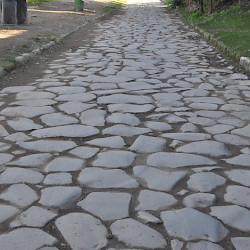 Rome, Via Appia |
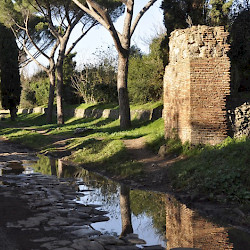 Rome, Via Appia (014), Street pavement (3) |
Procopius of Caesarea, a Byzantine historian living in the sixth century CE, is exaggerating. The quarry where the basalt blocks were mined was no far-off place but was located near the third mile marker by the Mausoleum of Caecilia Metella, where it can still be visited. Even so, it is understandable that Procopius presents things as more beautiful than they are, because there was no place in the world where a similar road could be seen.
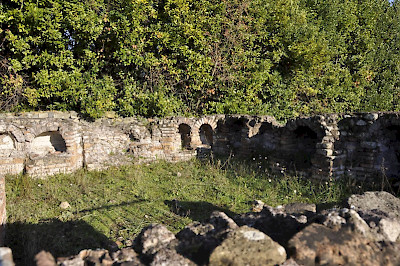
The traveller knew that the journey was almost over when, around the twelfth mile marker, he entered an area with many gardens, horticulture being an economic activity that is generally practiced in the immediate vicinity of a city. For the most part the rural estates were in the hands of senators. At one time they had lived in the city centre, but during the imperial period their presence was no longer required in Rome every day. Now that they were able to do so, they moved to the countryside, where life was much calmer and healthier.
Villa of the Quintilii
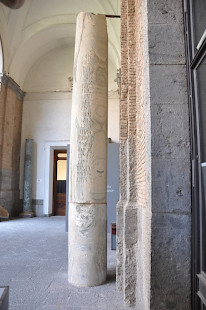
The country estates of the Antonine and Severan periods were impressive. One of the most beautoiful was the Triopion villa of Herodes Atticus, a Greek billionaire who lived in the age of the emperor Hadrian (r.117-138). Today, near the fifth mile marker on the Via Appia, it is possible to visit the ruins of just such a villa. It belonged to the brothers Quintilius, close aides to the emperor Marcus Aurelius. According to Cassius Dio his successor Commodus accused them of plotting a coup:
Commodus likewise killed the two Quintilii, Condianus and Maximus; for they had a great reputation for learning, military skill, brotherly accord, and wealth, and their notable talents led to the suspicion that, even if they were not planning any rebellion, they were nevertheless displeased with existing conditions. And thus, even as they had lived together, so they died together, along with the son of one of them. They had offered the most striking example ever seen of mutual affection; and at no time had they ever been separated, even in the offices they held. They had grown prosperous and exceedingly wealthy, and were wont to hold office together and to act as assistants to each other.note
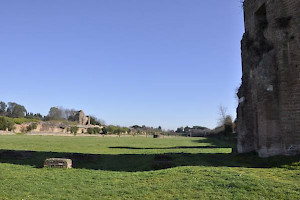
At the front of their estate they had built a fountain where travellers on the Via Appia could refresh themselves. Anyone who continued on would have seen tombs everywhere, which had been built over the centuries. Now the traveller was really close to the city. If the wind happened to be blowing from the northwest he could already smell Rome.
About an hour and a half after leaving the villa of the Quintilii, and having passed such monuments as the tombs of the Horatii and Curatii, the Mausoleum of Caecilia Metella, the Circus of Maxentius, the Christian and Jewish catacombs, he would have reached the outskirts of the Eternal City. Here, he would first reach the Baths of Caracalla and a Jewish neighborhood.
